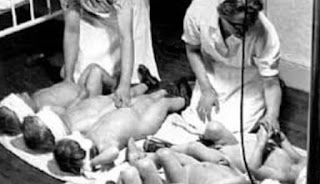World War II: U.S INVOLVEMENT
World War II: U.S involvement.
On December 7, 1941, following the Japanese bombing of Pearl Harbor, the United States declared war on Japan.
Three days later, after Germany and Italy declared war on it, the United States became fully engaged in the Second World War.
U.S. involvement in the Second World War was quickly followed by a massive mobilization effort.
With millions of men and women serving overseas in the nation's armed forces, most of those who remained at home dedicated themselves to supporting the war effort in whatever means was available to them.
Women, who had worked as homemakers or had held jobs outside military-related industries, took jobs in aircraft manufacturing plants, munitions plants, military uniform production factories, and so on.
As the need for steel and other resources increased, American citizens participated in rationing programs, as well as recycling and scrap metal drives. Americans also supported the war effort with their hard-earned dollars by purchasing Liberty bonds.
Sold by the U.S. government, the bonds raised money for the war and helped the bond purchasers feel they were doing their part for the war effort.
The U.S. entry into the war helped to get the nation's economy back on its feet following the depression.
Although just ten years earlier, jobs were very difficult to come by, there were now jobs for nearly everyone who wanted one.
With the creation of 17 million new jobs during the war, workers were afforded the opportunity to pay off old debts, as well as to begin saving some of their earnings.
Not all Americans remaining at home gained favorably from the war. Fearing that Japan might invade the West Coast of the United States, the government rounded up thousands of Japanese Americans who lived on the West Coast, and confined them to internment camps.
By 1948 when the internment program ended, tens of thousands of Japanese had suffered as internees. In addition, German Americans, Italian Americans, Hungarians, Romanians and Bulgarians were also interned.
On May 8, 1945, Germany surrendered. After the atomic bomb was dropped on Hiroshima and Nagasaki, Japan surrendered on September 2, 1945, and the Second World War came to an end.
The war cost the lives of more than 330,000 American soldiers. Many more were permanently injured or maimed.
To find more documents on this topic in Loc.gov, search with such terms as internment camps, defense workers, atomic bomb, and the names of world leaders such as Franklin Roosevelt and Adolf Hitler.



.jpeg)


.jpg)




Comments
Post a Comment